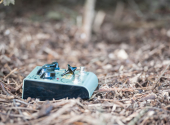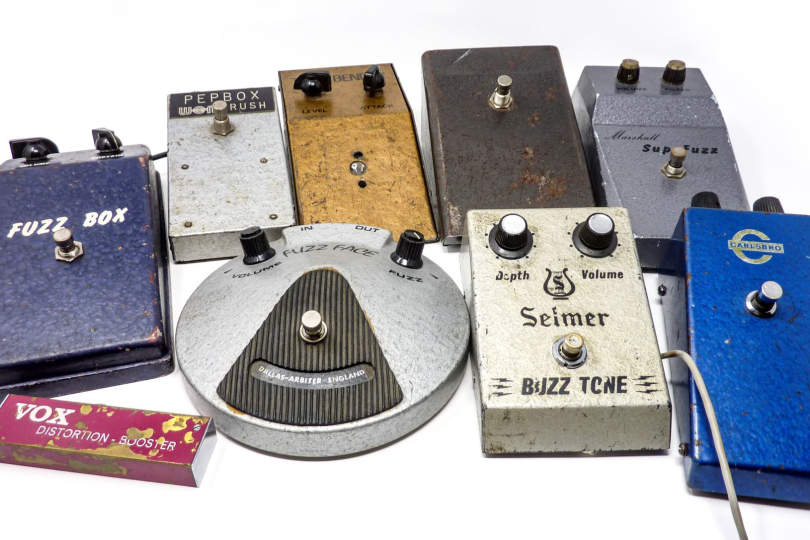
Guitar Effects Guide #5: Fuzz
If you decide to get a fuzz pedal these days, you have an incredible variety of boxes to choose from, ranging from Chinese products for a few bucks to expensive high-end boutique pedals that replicate specific fuzz effects from the past. Do you want an exact copy of the first Tone Bender with the same components? Or do you prefer an extreme fuzz that will smash your sound to atoms? No problem! Anyway, how did one of the first guitar effects actually come about? Let's go back to the days when most distortion was unintentional, usually caused by overdriving smaller tube amps.
Yes, amp distortion was considered a defect. And indeed, when we examine the first properly distorted sounds on old recordings, they were usually caused by a mistake or a malfunction of the amp. Probably the first such example is the recording of guitarist Willie Kizart on the "Rocket 88", where we can hear a broken-sounding guitar coming from a punctured speaker filled with a newspaper sheet. A recording of Rumble Link Wray who willingly cut through his speaker for the sake of the dirty sound was even censored in the US for its horrible sound.
In the late 1950s and early 1960s, the desire to achieve this broken sound became so widespread that it led to the introduction of the first compact fuzz pedal in 1962. However, Gibson advertised its Maestro FZ-1 rather clumsily and early sales figures were not great, but that was soon going to change.
In 1965, The Rolling Stones released their hit single "(I Can't Get No) Satisfaction". Keith Richards recorded the iconic riff with the Maestro FZ-1 and suddenly everyone wanted to own the pedal. As popularity grew, pedals as iconic as the Tone Bender and Fuzz Face were created – there was no turning back.
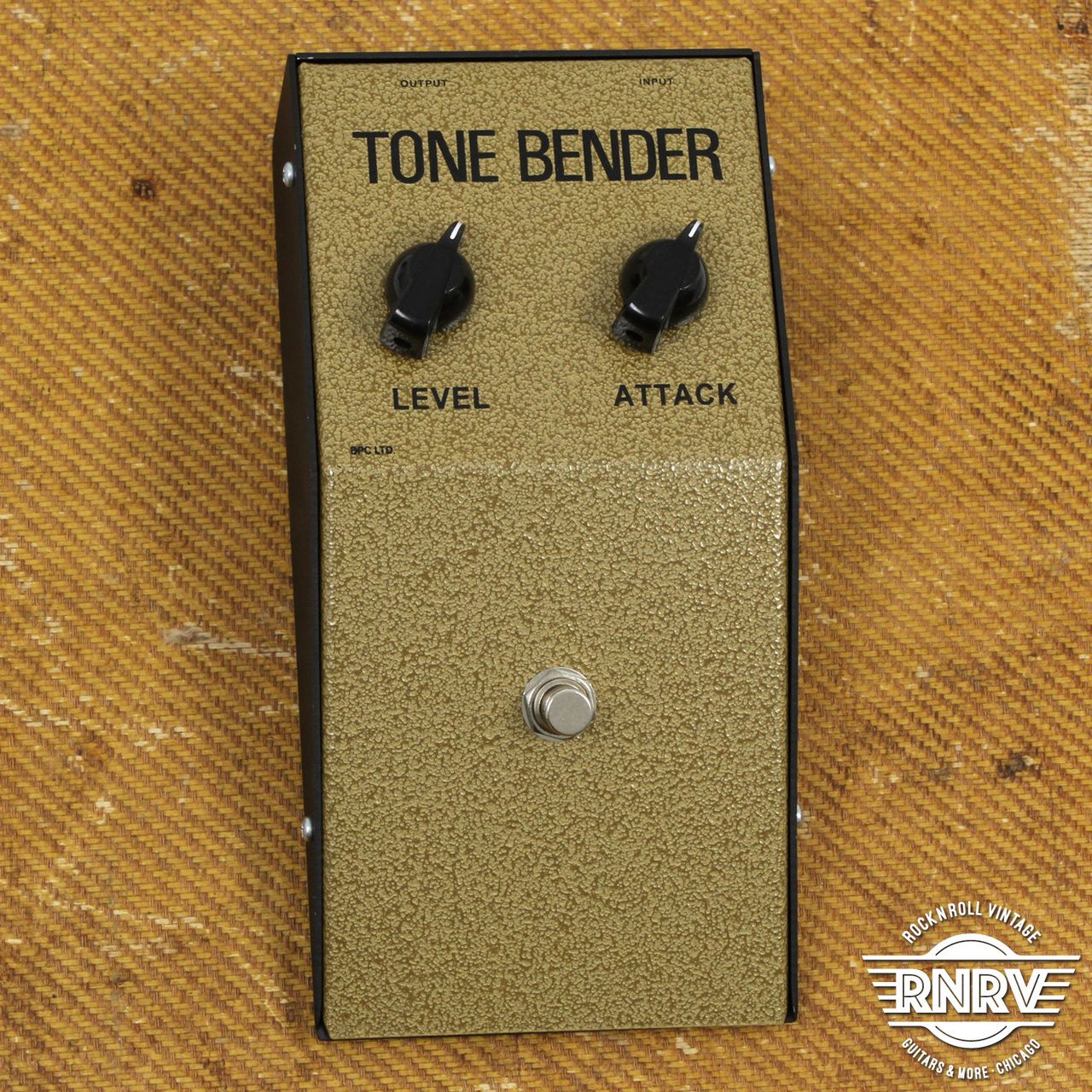
British Pedal Company MKI Tone Bender
First, something for connoisseurs – an exact replica of the first Tone Bender made by Gary Hurst in 1965 in London. All this with the same parts and even the same transistors made in the 1960s and packaged in an identical metal chassis. An absolute must for effects nerds!
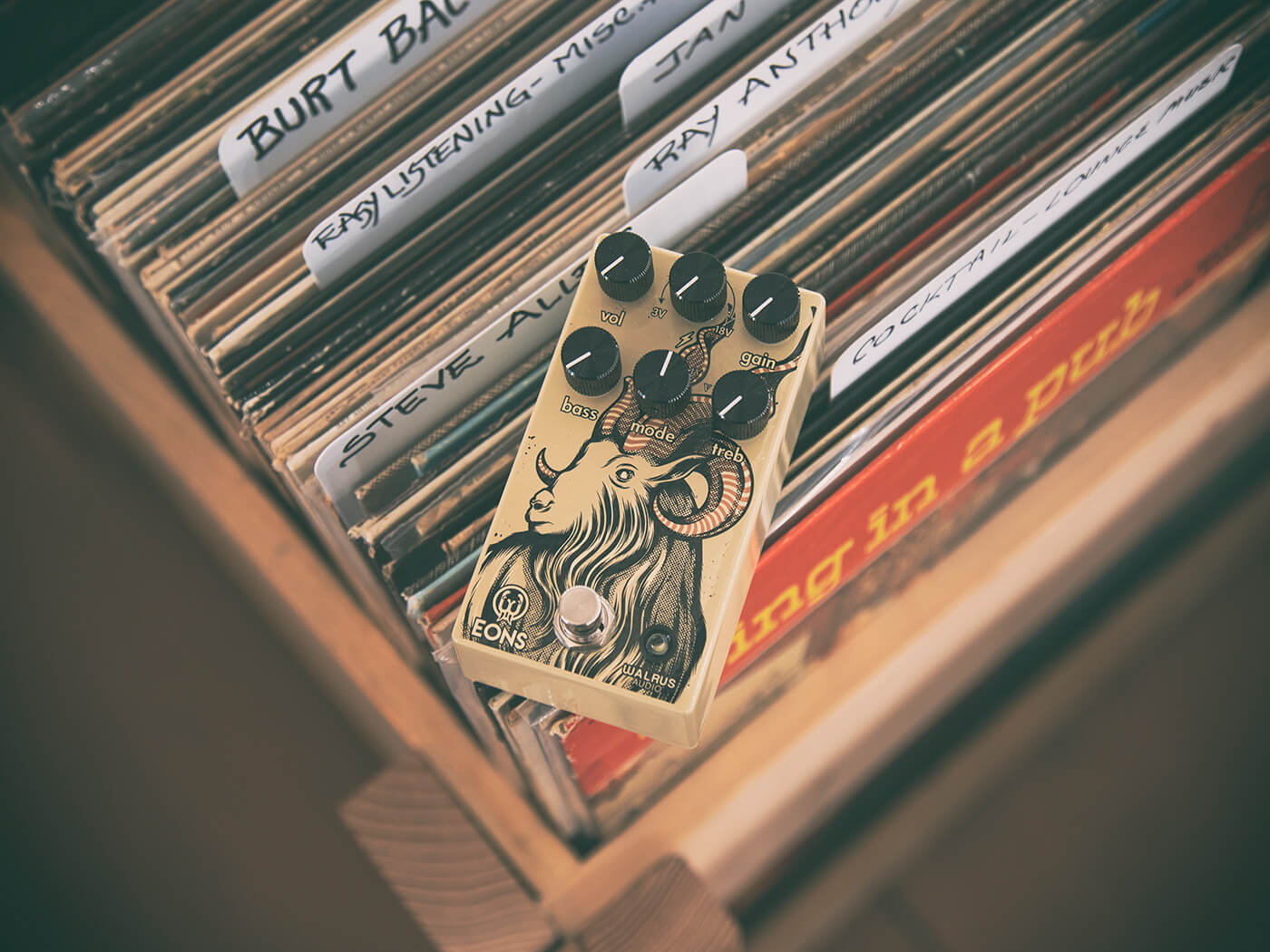
Walrus Audio Eons Fuzz
They could have made another Tone Bender, Fuzz Face or Big Muff clone, but they wouldn't be Walrus Audio. Instead, they created a very complex Fuzz pedal that integrates various combinations of germanium, silicon and LED circuitry. Another unique aspect is the choice of voltage, ranging from 3V to 18V. This makes the Eons not just another fuzz, but it allows you to achieve very unique sounds. For someone who wants a variety of fuzz sounds and doesn't have room to spare in a pedalboard, this is a great choice.

Earthquaker Devices Park Fuzz Sound
Earthquaker, on the other hand, tried to sound as close to the original as possible, so they teamed up with the creators of the original Park Fuzz. The result is an effect that is indistinguishable in sound character from the original Park. In any case, the guys at Earthquaker Devices weren't trying to make an exact clone but to provide the sound of the original to the modern guitarist. The Park Fuzz Sound has as classic a chassis as other pedals from the brand, including front panel inputs and outputs for seamless plugging in a modern pedalboard. Other changes include a greater range of distortion, an LED and of course true bypass circuitry.
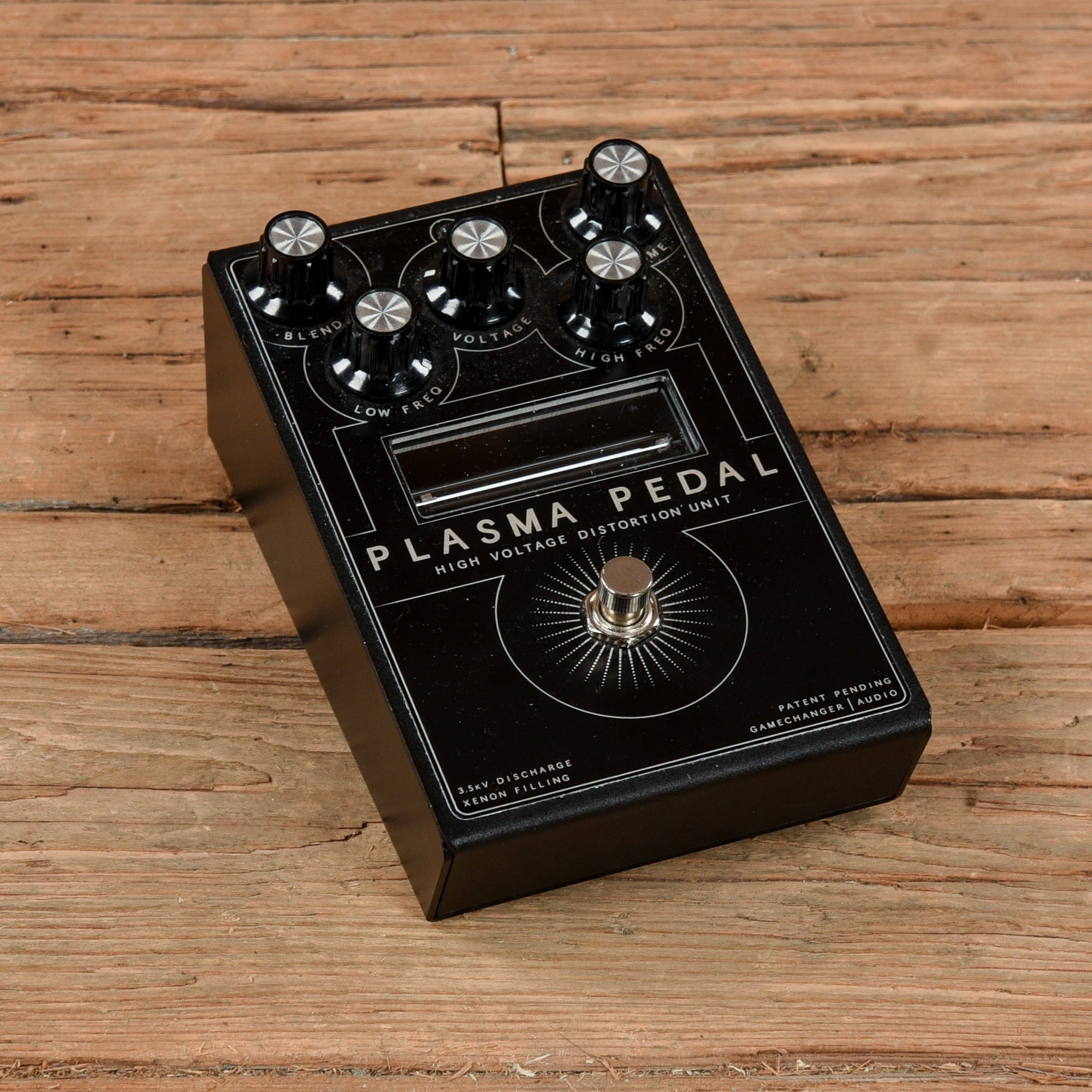
Gamechanger Audio Plasma Pedal
Another vintage fuzz? No way! This young Latvian company decided to approach it in a completely different way. Forget everything you know about guitar distortion. No transistors, germanium or silicon – instead just the power of electricity. And when I say power, I mean power. The Plasma pedal takes your audio signal and transforms it into a series of electrical discharges that you can literally see in the tube in the middle of the effect, and then turns the discharges back into an audio signal. This is an extremely innovative solution that results in extremely dirty distortion.
Another advantage is that the discharge is interrupted as soon as the tone is played. This, of course, immediately interrupts the signal and makes the effect incredibly quiet. The Voltage and Blend potentiometers are crucial here, with the former selecting how fast the signal closes, and the latter changing the ratio of clean to effect sound. You can go from more traditional (if that term can even be used in this case) sounding fuzz to gated almost synth-like sounds that, with a bit of delay and reverb, sound like something out of a Hans Zimmer soundtrack.
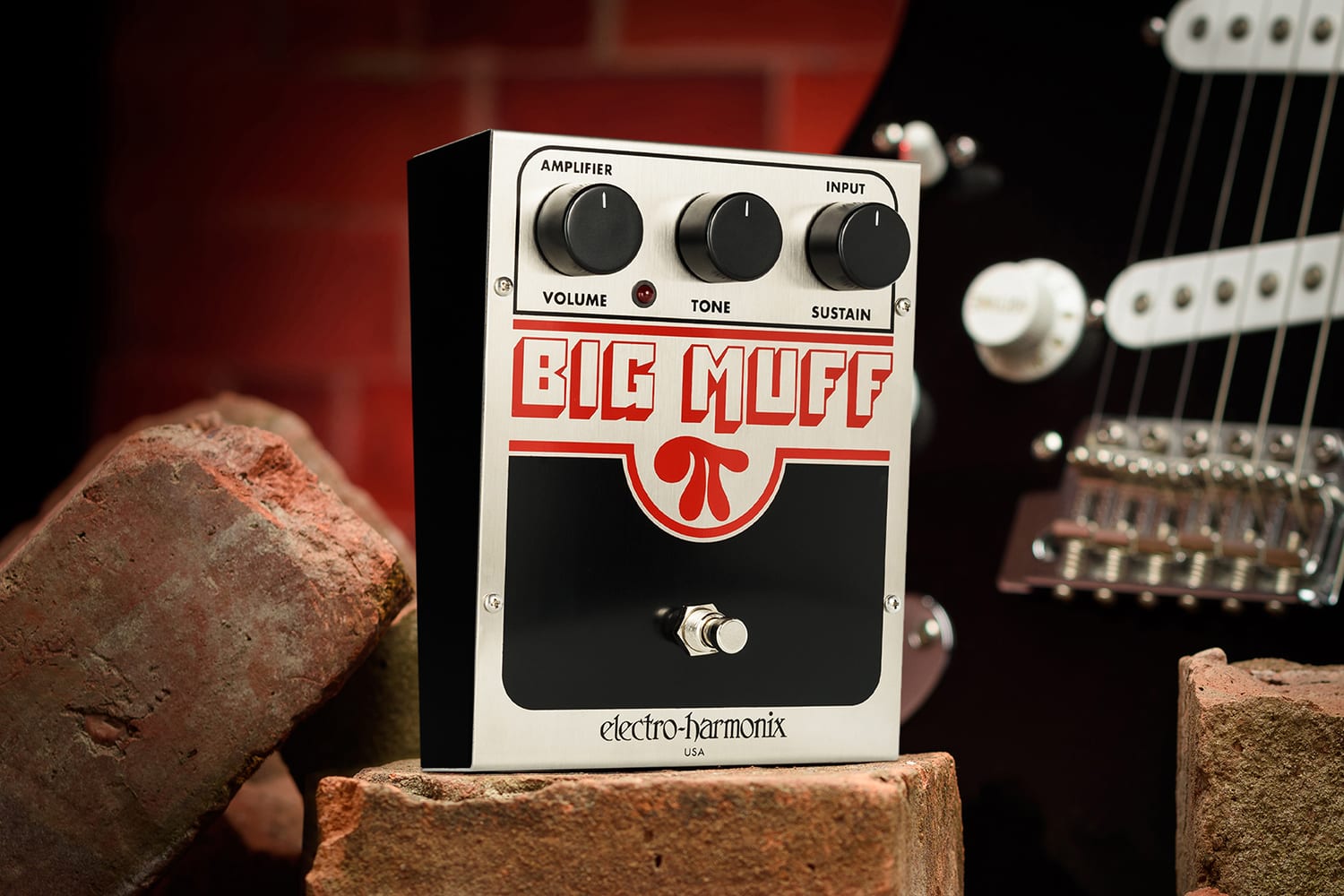
Electro Harmonix Big Muff PI
All right, let's get back down to earth. This is a classic that has also gone down in music history. And it's been in production since it first saw the light of day in 1971. In a world where most effects manufacturers try to make effects as compact as possible, this monster seems like a phenomenon from another dimension, so if you've fallen in love with the Big Muff's sound, don't despair. Electro Harmonix also makes smaller versions called Little Big Muff and Nano Big Muff.
If you have found an error or typo in the article, please let us know by e-mail info@insounder.org.


